Coving Installers: Not everyone appreciates the clean, defined junction where walls meet ceilings. If this is a concern for you, consider installing ornamental mouldings or coving. Interior design trends evolve over time, with coving being a prime example—popular one year, less so the next. Nevertheless, in the UK, many homes still embrace this functional feature. However, your decision to have coving should be guided solely by your personal preference, not fashion. It ultimately comes down to choosing between the timeless elegance of smooth, classic transitions or the modern, crisp lines between your walls and ceilings.
What is Coving? - Coving is a type of contoured moulding used primarily for decorative purposes, serving to soften and enhance the visual transition between walls and ceilings. This architectural feature is designed to add a touch of elegance and aesthetic charm to the otherwise stark boundary where a wall meets a ceiling. Available in an array of materials, coving options include extruded PVC, plaster core, medium-density fibreboard (MDF), polystyrene, hardened polyurethane, softwood, duropolymer, plastic, and gyproc. Each material offers unique benefits and characteristics, allowing for a wide range of decorative styles and finishes to suit various interior design preferences. This versatility makes coving a popular choice among homeowners and interior designers looking to inject a refined decorative element into their spaces.
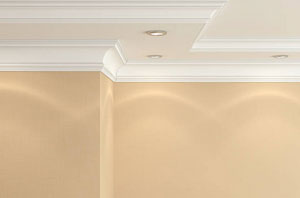
When it comes to selecting coving for your space, the design and shape represent another critical decision point. The choices available are diverse, encompassing a variety of styles and profiles that can complement any interior design scheme. Among the options are the cyma recta, which features a smooth, flowing curve; the dentil, known for its repeated block pattern; the ovolo, with its classic rounded shape; and the art deco, which offers a sleek, geometric aesthetic. Additionally, the cavetto's concave moulding, the cyma reversa (or ogee) with its double curve, the simplistic step design, the ornate egg and dart pattern, and the period-specific Victorian and Edwardian styles offer a range of decorative possibilities. Each design brings its own unique character and can significantly influence the overall look and feel of a room, making the choice of coving an important aspect of interior decoration.
You may be pondering the wisdom of installing coving. Engaging a skilled UK coving fitter ensures access to the finest counsel and direction for this project. Achieving a high-quality coved finish in your UK home stands as your foremost objective, and adhering to the advice and insights provided on this platform should facilitate your journey.
In addition to enhancing the aesthetics of your interiors, a skilled coving installation expert in the UK can assist you with repair and renovation tasks. Alongside maintaining other decorative elements in your home, cornices and covings require periodic attention and care. This may involve the restoration of panel mouldings, plaques, dado corners, fire surrounds, coving, cornices, picture rails, corbels, dado rails, or ceiling roses.
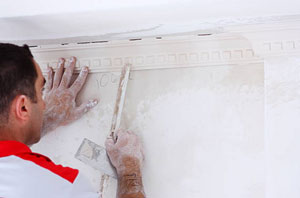
When it comes to this type of project, your ideal tradesperson is a dedicated coving installer in the UK. However, you might also consider hiring a joiner for wood mouldings, a painter/decorator, or a plasterer. Before making any hiring decisions, it's advisable to assess their experience in this specific field of work. If achieving a high-quality finish is a priority for you (as it should be), you'll want someone who approaches their work with precision and attention to detail.
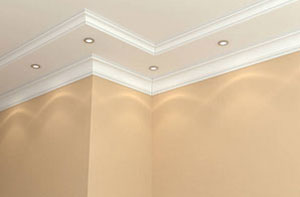
When reviewing the quotes you've collected, it's important not to simply opt for the least expensive coving installer. The lowest price doesn't always guarantee the best quality, and you may end up needing someone else to rectify poorly executed work down the line. To achieve an outstanding final appearance for your coving, it's essential to choose the most qualified individual for the job.
If you're looking to find coving installers in the UK, there are various methods you could employ. For instance, you might consider using a trade portal like Trustatrader or Rated People. Alternatively, exploring social media platforms such as Instagram or Facebook could yield results. Local classified ads or newspapers are another avenue to explore, or you could check the Federation of Master Builders (FMB) website for accredited local plasterers. For purchasing coving materials like ceiling roses, cutting tools, adhesive, corners, and packs, stores such as B&Q, Coving Direct, Wickes, or Jewson are good places to start. Additionally, if you're interested in attempting the installation yourself, you can acquire the necessary tools and equipment from retailers like Screwfix, Tool Station, or Artex.
Polyurethane Coving UK
Polyurethane coving is a modern alternative to traditional plaster or MDF coving, known for its lightweight, durable, and flexible properties. Unlike plaster, which can be heavy and fragile, polyurethane is much easier to handle and install, making it a popular choice among DIY enthusiasts and professional installers alike. Its flexibility is especially beneficial in rooms with uneven walls or ceilings, as it can adapt to slight imperfections, providing a clean and consistent finish.
Another significant advantage of polyurethane coving is its resistance to moisture and temperature changes, making it suitable for use in bathrooms and kitchens where humidity levels are higher. This material is also resistant to warping, cracking, and shrinking, ensuring a long-lasting aesthetic appeal with minimal maintenance required.
The design options with polyurethane coving are vast, ranging from simple, contemporary styles to more ornate, traditional patterns. This variety allows homeowners to choose a design that best complements their interior decor. Additionally, it's usually pre-primed, ready for painting, which offers an opportunity to match the coving to any colour scheme, further enhancing its versatility in interior design. (Tags: Duropolymer Coving UK, Polyurethane Coving UK, Cheap Coving UK).
Do-it-Yourself Coving Installation

It is not at all inconceivable for you to have a bash at installing the coving yourself. Your local UK DIY store will probably stock lengths of coving, or else you will be able to order them online. The coving itself usually comes in straight lengths of two or three metres, and to make life a bit easier, sometimes pre-cut corners are available. Make sure that you get a decent coving adhesive and a good quality gap filler. Coving adhesive is available in cartridges to apply by sealant gun, as a bag of powder which is mixed with water or ready mixed in a tub.
There is as expected a great deal of information on the internet offering tips on how to fit coving and cornices, combined with descriptive tutorials and videos to help you on your way. We recently found this interesting post which could be useful.
What's the Difference Between Coving & Cornice?
A question that we are commonly asked by puzzled homeowners in the UK, is "What exactly is the difference between coving and cornice?" The reply that you will probably not be anticipating, is that they're basically the same. Coving and cornice are both types of decorative moulding used to embellish the area where walls meet ceilings, but they differ in design, style, and historical context. Coving typically refers to a simple, curved moulding, with a concave profile, often uniform in shape. It's designed to create a smooth transition between wall and ceiling, and is popular in modern and contemporary interiors due to its simplicity and ease of installation. Cornices, on the other hand, are more ornate and can have complex patterns and designs. They originate from classical architecture and are often found in historic or period homes, adding a more traditional or elaborate aesthetic. Cornices can be made in various styles, reflecting specific architectural eras or design motifs, and they tend to be more prominent and decorative compared to the understated appearance of coving. (Tags: Coving and Cornices UK, Cornice or Coving UK, Cornice Installation UK, Cornice vs Coving UK).
Maintenance and Repair
Coving and cornices are elegant architectural features that enhance the aesthetics of a room by adding decorative elements to the junction between walls and ceilings. Proper maintenance and occasional repairs are essential to ensure these elements retain their beauty and functionality over time.
Maintenance of coving and cornices primarily involves regular cleaning. Dust and dirt tend to accumulate on these surfaces, diminishing their visual appeal. A soft brush or damp cloth can be used to gently remove debris without damaging the delicate designs. It's important to be cautious not to apply too much pressure, as coving and cornices are often made of plaster or other fragile materials.
In cases where damage occurs, timely repairs are crucial. Cracks, chips, or breaks in coving and cornices can be fixed using appropriate filler materials and a steady hand. It's advisable to seek the assistance of a professional if the damage is extensive or if the coving/cornices are intricate and require intricate restoration.
Additionally, as with any architectural element, coving and cornices should be inspected periodically for signs of water damage or structural issues. Leaks from roofs or plumbing can harm these features, necessitating swift repairs to prevent further deterioration.
By adhering to a routine maintenance schedule and addressing repairs promptly, homeowners can preserve the beauty and integrity of their coving and cornices, ensuring they continue to grace their living spaces with timeless elegance.
What Tradesman Puts up Coving?
Coving installation typically falls under the purview of skilled tradesmen like plasterers, carpenters, and sometimes even decorators.
- Plasterers: Plasterers are often the primary tradesmen responsible for putting up coving, especially when it involves plaster or gypsum-based materials. They have the expertise to create intricate designs and smooth, seamless finishes. Plasterers mix, shape, and attach the coving strips to the junction between walls and ceilings, ensuring they are level and aesthetically pleasing. They also possess the knowledge to deal with any imperfections in the wall-ceiling junction.
- Carpenters: Carpenters may also handle coving installation, particularly when it involves wooden or MDF (medium-density fiberboard) coving. They measure, cut, and fit wooden coving pieces, creating elegant and detailed designs. Carpenters can also ensure that the coving integrates seamlessly with other carpentry elements in the room.
- Decorators: In some cases, decorators with expertise in interior design may install coving, especially when it's part of a broader decorative project. They can offer design advice and ensure the coving aligns with the overall aesthetic of the space.
Ultimately, the choice of tradesman depends on the type of coving material, design complexity, and the desired outcome, with plasterers and carpenters being the most common choices for coving installation.
Do Rooms Look Better With Coving?
The aesthetic impact of coving on a room largely depends on individual preferences and the overall design context. Coving can enhance the appearance of a room by softening the transition between walls and ceilings, adding a touch of elegance, and providing a finishing touch. It can create a sense of continuity, make ceilings appear higher, and hide imperfections. In traditional or period-style homes, coving often complements the architectural style, enhancing the overall charm.
However, whether rooms look better with coving is subjective. In modern and minimalist designs, omitting coving may create clean lines and a sleek appearance. Additionally, room size, ceiling height, and the chosen coving style all influence the visual impact. Ultimately, the decision to install coving should align with your personal taste and the desired aesthetic, as some individuals prefer the simplicity of uncoved rooms, while others appreciate the character and sophistication that coving can bring
Searching Online For a Coving Installer in the UK

In this day and age the majority of property owners in the UK who are trying to find services and tradesmen of any sort are inclined to "Google it", in other words search for them online. As you're viewing this webpage at this instantaneous, you more than likely found us by searching on Google, Ask, Yahoo or Bing. What you will discover is that those major search engines churn out results which are rather varied.
Most people in the UK, when hunting for coving fitters will head to Google or Yahoo and key in "coving fitters near me", "coving fitters UK", "UK coving fitters" or "coving fitters in the UK". Web directories such as Scoot, Yell, Yelp or Three Best Rated, or listings for large lead generating sites like My Builder, Checkatrade, TrustaTrader, Quotatis, Local Heroes or Rated People will most likely show up highly on the consequential page one listings, as will strictly "pay per click" advertising. You will very likely discover the sites of genuine coving specialists abandoned on the 2nd or 3rd pages of the listings, demoted by the wealthier companies who can well afford SEO.
Coving Related Tasks

UK coving specialists will likely help with Victorian coving, ornamental mouldings, the installation of dado rails, fancy wall plaques, repairs to coving, living room coving installations, wooden coving, ornate corbels, the cutting of coving, ornate coving installation, plaster coving, gyproc coving, the restoration of coving and mouldings, egg and dart coving, ornamental fire surrounds, duropolymer coving, cutting coving mitres, estimates for coving installation and other coving related work in the UK, UK.
UK Coving Services
- UK Ornate Mouldings
- UK Dado Rail Installation
- UK Duropolymer Coving
- UK Polyurethane Coving
- UK Ceiling Roses
- UK Coving Removal
- UK Wooden Coving
- UK Coving Replacement
- UK Coving Supplies
- UK Coving Fitting
- UK Coving Installation
- UK Egg and Dart Coving
- UK Cornice Installation
- UK Cheap Coving
Other Useful Tradesmen in the UK
For coving and any other similar work in the UK, you might also require a a handyman in the UK, a painter and decorator in the UK or a plasterer in the UK.
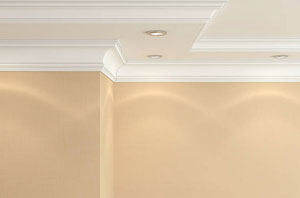 Coving Installation UK
Coving Installation UK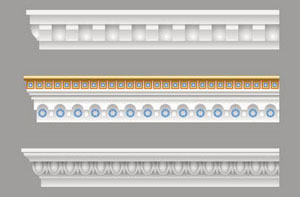 Coving Installers Near Me
Coving Installers Near Me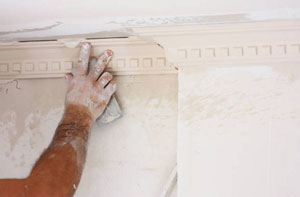 Coving Fitters UK
Coving Fitters UKMore UK coving and plastering experts: Plastering Firms, Commercial Plastering, Cheap Plastering, Cheap Plastering, Plaster Repair, Cheap Plasterers, Plasterers, Plaster Repairs, Commercial Plastering, Pebble Dashing, Patch Plastering, Plastering Firms, Plaster Repair, Patch Plastering, Plastering Services, Rendering, Domestic Plastering, Plastering Companies, Gyproc Coving, Coving Services, Polyurethane Coving, Duropolymer Coving, Coving Services, Cornice Installation, Cornicing Services, Cornice Installation, Cheap Coving Fitters, Cheap Coving, Cornicing Services, Coving and Cornices, Coving, Plastic Coving, Polyurethane Coving, Coving Specialists, Cornice Fitters, Coving Services, Coving and Cornices, Coving, Coving Specialists, Cornices and Coving, Cornice Fitters, Cheap Coving, Wooden Coving, Cornice Installation, Polyurethane Coving, Plastic Coving, Cornice Fitters, Coving Services, Cornicing Services, Coving Cutting, Coving Installers, Coving, Duropolymer Coving, Plastic Coving, Cheap Coving, Cornicing Services, Coving Services, Cornice Installation, Polyurethane Coving, Coving and Cornices, Cheap Coving Fitters, Plaster Coving, Coving, Cornicing Services, Coving Fitters, Coving Fitters, Cheap Coving Fitters, Coving, Plaster Coving, Plastic Coving, Coving Specialists, Coving Installation, Plastic Coving, Coving and Cornices, Cornicing Services, Wooden Coving, Cheap Coving Fitters, Cheap Coving, Polyurethane Coving, Lightweight Coving, Coving, Cornice Fitters, Coving and Cornices, Plastic Coving, Coving, Duropolymer Coving, Wooden Coving, Duropolymer Coving, Coving Services, Coving Fitters, Coving Fitters, Polyurethane Coving, Plastic Coving, Coving Cutting, Cheap Coving Fitters, Cornices and Coving, Cheap Coving, Wooden Coving, Cornice Installation, Coving Fitters, Duropolymer Coving, Cornicing Services, Wooden Coving, Duropolymer Coving, Cheap Coving, Plastic Coving, Duropolymer Coving, Cornice Fitters, Plastic Coving, Coving Cutting, Wooden Coving, Gyproc Coving, Plaster Coving, Gyproc Coving, Plastic Coving, Cornicing Services, Cornices and Coving, Coving Installation.
Coving Specialists - Coving Fitters - Ceiling Rose Installation - Coving Installers - Coving Removal - Cheap Coving - Dado Rails and Mouldings - Cornices - Coving Installers Near Me




